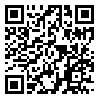Volume 65, Issue 14 (Vol 65, Supplement 2 2008)
Tehran Univ Med J 2008, 65(14): 12-15 |
Back to browse issues page
Download citation:
BibTeX | RIS | EndNote | Medlars | ProCite | Reference Manager | RefWorks
Send citation to:



BibTeX | RIS | EndNote | Medlars | ProCite | Reference Manager | RefWorks
Send citation to:
Mosleh A, Darbooy SH, Khoshnevis Ansari SH, Mohammadi M. Drug prescription based on WHO indicators: Tehran university of medical sciences facilities with pharmacy. Tehran Univ Med J 2008; 65 (14) :12-15
URL: http://tumj.tums.ac.ir/article-1-658-en.html
URL: http://tumj.tums.ac.ir/article-1-658-en.html
Abstract: (16452 Views)
Background: Rationalize of drug use in societies is one of the main responsibilities of
health policy makers. In our country irrational use of dugs has increased in the recent
years, for example one study in 1998 has shown that average number of medicines per
prescription was 3.6, percentage of prescriptions containing antibiotics was 43% and
percentage of prescriptions containing Injections was 39%. One of the best tools for
evaluation of drug use is the WHO guideline for calculating prescribing indicators. In this
study, we had an assessment about prescribing patterns in South of Tehran, Islamshahr
and Rey Health Centers.
Methods: In order to evaluating prescribing indicators in Tehran University of Medical Sciences region 35 facilities which had pharmacy were selected according to WHO gridline and 4190 prescription from these facilities were studied. Indicators were calculated according to formulas has explained in article. Results: The average number of drug per prescription was 2.58, percentage of drug prescribed by generic name: 99.8%, percentage of encounters prescribed Antibiotics: 62.39% percentage of encounters prescribed Injection: 28.96% & the percentage of drugs prescribed from PHC formulary 99.46%. These findings were almost similar in the three Health Centers.
Conclusions: Health facilities are one of the most important bases to improve rational use of Drugs and general practitioners are the major chain in RUD cycle. Results show that we need to design intervention especially educational interventions to improve two WHO prescribing indicators, percentage of encounters prescribed Antibiotics & Injections in this region. For reaching this goals we need to design educational programs for physicians, pharmacists and people too. These educations can be as workshops, seminars, conferences or printed materials such as books, leaflets and etc
Methods: In order to evaluating prescribing indicators in Tehran University of Medical Sciences region 35 facilities which had pharmacy were selected according to WHO gridline and 4190 prescription from these facilities were studied. Indicators were calculated according to formulas has explained in article. Results: The average number of drug per prescription was 2.58, percentage of drug prescribed by generic name: 99.8%, percentage of encounters prescribed Antibiotics: 62.39% percentage of encounters prescribed Injection: 28.96% & the percentage of drugs prescribed from PHC formulary 99.46%. These findings were almost similar in the three Health Centers.
Conclusions: Health facilities are one of the most important bases to improve rational use of Drugs and general practitioners are the major chain in RUD cycle. Results show that we need to design intervention especially educational interventions to improve two WHO prescribing indicators, percentage of encounters prescribed Antibiotics & Injections in this region. For reaching this goals we need to design educational programs for physicians, pharmacists and people too. These educations can be as workshops, seminars, conferences or printed materials such as books, leaflets and etc
| Rights and permissions | |
 |
This work is licensed under a Creative Commons Attribution-NonCommercial 4.0 International License. |





